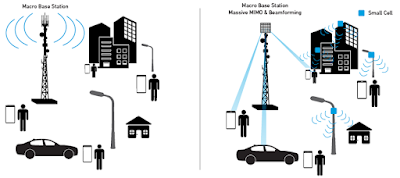Timing synchronization is crucial between cell towers in 4G and 5G networks to ensure efficient and reliable communication. Here are a few reasons why timing synchronization is critical:
- Interference avoidance: In wireless networks, multiple base stations (cell towers) operate in close proximity to each other. Without proper timing synchronization, the signals transmitted by these base stations may interfere with each other, leading to degraded network performance and reduced coverage. By synchronizing the timing of transmissions, the base stations can avoid unnecessary interference and allocate the available frequency resources more efficiently.
- Coordinated multipoint transmission and reception (CoMP): CoMP is a technique used in advanced cellular networks like 4G and 5G to improve network capacity and coverage. It involves multiple base stations cooperating to serve a user equipment (UE) simultaneously. To achieve effective CoMP, accurate timing synchronization is required between the participating base stations. By synchronizing their transmissions, the base stations can combine their signals at the UE, enhancing the signal quality and overall system capacity.
- Handover and mobility management: Handover is a crucial aspect of cellular networks when a mobile device moves between different base stations. Without proper timing synchronization, handovers can be problematic, leading to dropped calls or service interruptions. Accurate timing synchronization enables seamless handovers by ensuring that the target base station is ready to receive the mobile device's signal at the right time.
- Time-division duplexing (TDD) operation: Both 4G and 5G networks support TDD, a transmission scheme where the uplink and downlink transmissions share the same frequency but occur at different times. TDD relies on precise timing synchronization to ensure that uplink and downlink transmissions do not overlap, preventing interference between them. Without accurate timing synchronization, TDD-based networks may experience significant degradation in performance.
- Network efficiency and capacity: Synchronization helps optimize resource allocation and scheduling within the network. By having synchronized clocks, base stations can coordinate their transmissions and minimize unnecessary gaps or overlaps, thus increasing overall network efficiency and capacity.
In summary, timing synchronization is critical in 4G and 5G networks to prevent interference, enable advanced techniques like CoMP, support seamless handovers, ensure efficient TDD operation, and improve network performance and capacity.







